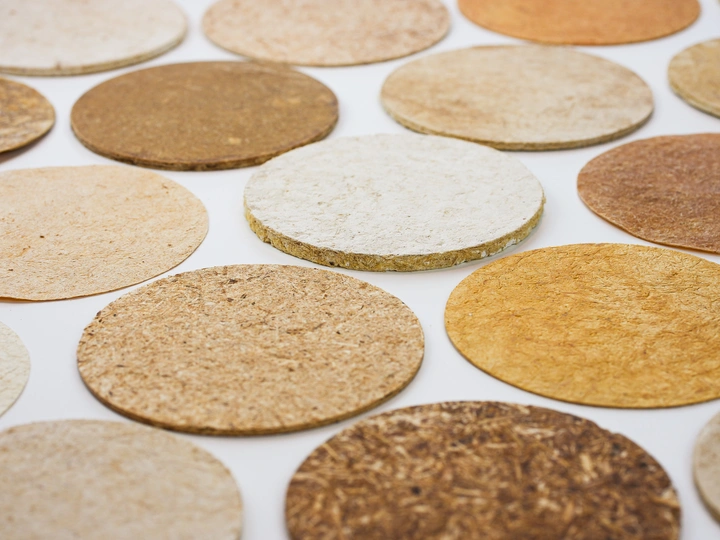Da Bagaceira (From the Pile of Bagasse)

I am a furniture designer and maker by training and, since completing my BFA in furniture design at Rhode Island School of Design, I have worked for two award-winning furniture design studios focusing on woodcraft and as a welder, woodworker, and ceramic assistant for a blue-chip sculpture artist. Recently, I have been applying my design and making skills to a new medium: materials made from food and agricultural waste. After earning my MA in Design for Emergent Futures at ELISAVA Design University and the Institute of Advanced Architecture of Catalunya, I started a 1-year postgraduate research program where I investigated the potential of the main byproduct of the sugarcane industry—bagasse—as a key ingredient for the development of materials for interior architecture and design. Through research-driven material experimentation, I developed a library of different bagasse-based materials, familiarizing myself with various biodegradable binders and additives. This research led me to start the Bagaceira Project, a design and material research practice focusing on upcycling bagasse to create low-carbon and biodegradable materials and products for the built environment. To source my materials, I collect sugarcane waste (leftovers from juice production) from restaurants in Barcelona. As the project grows, I plan to source the bagasse from refineries in the region that produce cane sugar. As I pursue a more holistic approach to design, I decompose and recompose materials while researching and reinterpreting the historical, cultural, and ecological contexts in which these materials exist. I share my research and findings through hands-on workshops, talks, exhibitions, and publications and look forward to upcoming collaborations with other designers, architects, and material scientists to push this project further and in new and unexpected directions.
Sugarcane is the world’s largest crop, grown in over 80 countries and processed in many more. Its rapid growth allows for the conversion of CO2 to biomass at a rate up to 50 times faster than traditional forestry. Post-sugar and ethanol production, about 1/3 of the plant’s mass remains as bagasse. Bagasse is typically burnt for fuel, fed to cows, or left to rot—releasing the carbon back into the atmosphere. What if we could store the CO2 absorbed during the cane’s growing cycle in objects that can last for decades? As part of a year-long research project, I developed a library of biodegradable bagasse-based materials and now, I am creating a collection of furniture and architectural surfaces using these materials to showcase the plethora of possibilities that can come from a heap of organic waste. So far, I have completed some small prototypes to test out different fabrication methods and have designed a series of objects (room dividers, light fixtures, and acoustic panels) that I plan to develop over the coming year. With this research-driven collection, I aim to encourage audiences to exercise their holistic material intelligence, open space for critique of our take-make-waste paradigm, and spark ideas on how to remake-reuse-return. I call the collection “Da Bagaceira”, which translates literally to “from the pile of bagasse” but in Brazil—where the idea for the project began—the words take on other nuanced meanings: A wild party that goes until dawn; the rough hangover that follows; my tangled hairdo; a sticky situation; a woman who is bad-ass; or someone of low class. Linguistic creativity transforms a simple image of a messy pile of organic trash into a variety of unexpected characters, identities, and contexts. I aim to craft objects that embody this inventive and transformative spirit and invite audiences to discover, understand, or critique our materials’ origins, economic systems, and ecological impacts.